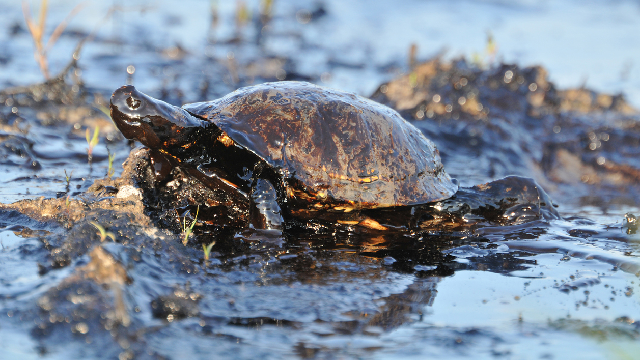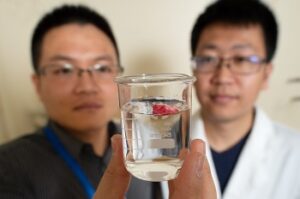Aussie researchers have developed a new, low-cost foam to safely and quickly clean up oil spills.
Discuss this amazing development with students in years 4, 6, 7, 8, 9, and 10 who are studying Chemical, Biological or Earth and Space Sciences to help them contextualize their understanding of material properties, ecosystems and human impacts on the planet.
Word Count / Video Length: 606 / 0:54 mins

There have been more than 700 oil spills worldwide in the past 20 years polluting oceans and coastlines as well as endangering marine ecology and other wildlife.
The cleaning up of these oil spills quickly, is vital to saving the environment and ecosystems that they occur in.
That’s where Jingsan Xu and his team from Queensland University of Technology step in. They’ve invented a new, nontoxic, low-cost foam that can suck up the oil quickly.
“Thousands of tons of oil have been disgorged into our oceans over the decades. One of the most memorable was the Exxon Valdez oil spill in Prince William Sound, Alaska, in 1989 which spilled 37,000 metric tons of crude oil and is considered one of the worst ever human-caused environmental disasters,” says Xu.
“More recently, the Deepwater Horizon oil spill in the Gulf of Mexico in 2010 had the dubious honour of becoming the largest marine oil spill in the history of the petroleum industry.”
“Although there are methods for cleaning up oil spills, they are usually very messy and difficult to contain while some methods, such as in situ burning, create more hazards for the environment. The key to saving the environment from maximum damage is to mop up the oil as quickly as possible,” he says.
The foam can be sprayed directly onto the oil spill
The developed foam can be sprayed straight onto the surface of where the oil spill has occurred. The foam absorbs the waste and can then be easily scraped away for safe disposal.
“Sorbents – large sponges – are also used but only for the removal of final traces of oil or in places skimmers cannot get to.”
“So what we have focussed on is the adaptability and possibilities associated with surfactants which are already widely used in research, industrial production and daily lives via household cleaning products.”
“Surfactants are compounds that lower the surface tension between two liquids, between a gas and a liquid, or between a liquid and a solid – in other words, they can be detergents, wetting agents, emulsifiers, foaming agents, and dispersants.”
Xu says that one way to remove the floating oil from the surface of the sea is through adsorption.

“Hydrophobic porous foam – low density material that can float on liquid – is a promising candidate to achieve that and we recently reported on the synthesis of a hydrophobic hybrid foam which showed excellent adsorption performance to a range of organic liquids.”
From the ocean to the kitchen
Xu and the team have now created what they call a ‘hybrid surfactant’ by combining an oil-soluble molecule, stearic acid, with water-dispersible alumina nanofibers via chemisorption at the oil−water interface.
“Our hybrid surfactant exhibits reversible switching between hydrophilic (molecules attracted to water) and lipophilic (able to dissolve in fats, oils, lipids, and non-polar solvents) states by manipulating the adsorption−desorption volume of stearic acid attached to the alumina nanofibers.”
“Therefore, the emulsions stabilised by this organic−inorganic hybrid can reversibly transform between oil-in-water and water-in-oil type by simple mechanical manipulation.”
The other neat thing about this foam is that unlike other conventional approaches, no other external stimulus is needed. That means it could also be used in other applications such as cosmetics, food and in the kitchen in things such as paper towels.
“As a bonus, organic−inorganic three-dimensional solid foams can be readily prepared based on the emulsion system, which demonstrates a strong potential for use in evaporating oil spills – in the ocean or the kitchen – in a very quick fashion.”
The paper has been published in The Journal of Physical Chemistry.
Login or Sign up for FREE to download a copy of the full teacher resource





